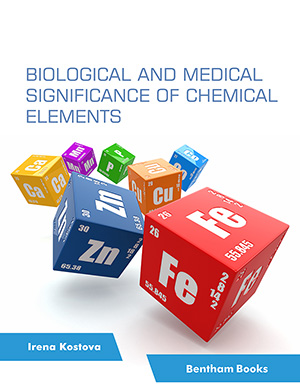Abstract
The emergence of organic pollutants such as phenolic acids, pesticides, dyes, petrochemicals, pharmaceuticals, and industrial wastes threatens our environment, including biodiversity, ecosystems of terrestrial and aquatic animals, and human health. It is well known that toxicants disrupt the biochemical balance of organisms and cause physiological effects in individuals. Emerging Organic Pollutants (OPs) have varied levels of lethality depending on their chemical nature and byproducts, properties and composition of the compound fractions, mode of exposure, levels of exposure, and time of exposure. Accordingly, risk mitigation measures should be taken with constant environmental changes. The peroxidases are groups of heme-proteins, which at present are considered the most efficient biocatalysts for the bioremediation of the environment. To overcome the numerous disadvantages of conventional biological remediation methods, peroxidases require a more thorough interpretation for broadly understanding their potential uses in organic transformations as an efficient biocatalyst. Peroxidases are susceptible to the breakdown of polyaromatic hydrocarbons, dyes, pharmaceutical compounds, agrochemicals, phenols, and other highly hazardous organic pollutants found in industrial effluents. In this review, we focus on recent advances in the applications and the efficiency of peroxidases as eco-friendly catalysts.
Keywords: Organic pollutants, peroxidases, toxicity, biocatalyst, bioremediation, textile dyes.
[http://dx.doi.org/10.4172/2161-1009.1000308]
[http://dx.doi.org/10.1016/j.abb.2014.12.025] [PMID: 25575902]
[http://dx.doi.org/10.1016/0014-5793(76)80804-6] [PMID: 1001465]
[http://dx.doi.org/10.3109/10242422.2012.715636]
[http://dx.doi.org/10.1016/j.scitotenv.2019.07.224] [PMID: 31466201]
[http://dx.doi.org/10.1016/j.foodchem.2009.02.035]
[http://dx.doi.org/10.1016/B978-0-444-64114-4.00001-7]
[http://dx.doi.org/10.1016/j.scitotenv.2020.136572] [PMID: 31986384]
[http://dx.doi.org/10.1007/s00128-015-1639-9] [PMID: 26341253]
[http://dx.doi.org/10.1016/j.jksus.2014.10.001]
[http://dx.doi.org/10.1201/9781351073622]
[http://dx.doi.org/10.1098/rspb.2013.3313] [PMID: 24920477]
[http://dx.doi.org/10.1016/j.molliq.2018.05.029]
[http://dx.doi.org/10.1021/es902514d] [PMID: 20384372]
[http://dx.doi.org/10.1016/j.scitotenv.2012.04.075] [PMID: 22652008]
[http://dx.doi.org/10.1016/j.chemosphere.2020.129103] [PMID: 33288281]
[http://dx.doi.org/10.1016/j.diabet.2013.09.006] [PMID: 24262435]
[http://dx.doi.org/10.1016/j.envint.2019.105028] [PMID: 31382183]
[http://dx.doi.org/10.1289/ehp.1409055] [PMID: 25768209]
[http://dx.doi.org/10.1016/j.scitotenv.2011.07.038] [PMID: 21917296]
[http://dx.doi.org/10.1016/j.ajme.2017.09.001]
[http://dx.doi.org/10.1007/978-1-4614-1025-6_20]
[http://dx.doi.org/10.1093/af/vfy030] [PMID: 32002236]
[http://dx.doi.org/10.1007/s10584-013-0853-x]
[http://dx.doi.org/10.1016/S0140-6736(06)68079-3]
[http://dx.doi.org/10.1038/nclimate1167]
[http://dx.doi.org/10.1007/s00244-017-0490-x] [PMID: 29243159]
[http://dx.doi.org/10.1016/j.tplants.2004.08.009] [PMID: 15465684]
[http://dx.doi.org/10.1016/S1360-1385(02)02312-9] [PMID: 12234732]
[http://dx.doi.org/10.1146/annurev.arplant.50.1.601] [PMID: 15012221]
[http://dx.doi.org/10.1042/bst0230247] [PMID: 7672269]
[http://dx.doi.org/10.1093/aob/mcf118]
[http://dx.doi.org/10.3390/ijms160613561] [PMID: 26075872]
[http://dx.doi.org/10.3390/antiox10020277] [PMID: 33670123]
[http://dx.doi.org/10.3390/antiox8120641] [PMID: 31842380]
[http://dx.doi.org/10.3390/ijms19113370] [PMID: 30373292]
[http://dx.doi.org/10.1111/apha.12515] [PMID: 25912260]
[http://dx.doi.org/10.1016/j.envpol.2017.11.041] [PMID: 29156440]
[http://dx.doi.org/10.1016/B978-0-12-818307-6.00010-X]
[http://dx.doi.org/10.1007/s12010-019-03083-1] [PMID: 31309412]
[http://dx.doi.org/10.1016/j.eti.2020.101211]
[http://dx.doi.org/10.1016/j.enzmictec.2013.11.005] [PMID: 24411438]
[http://dx.doi.org/10.1080/10643380903299491]
[http://dx.doi.org/10.1016/j.jece.2014.04.014]
[http://dx.doi.org/10.1016/j.ijbiomac.2020.09.045] [PMID: 32931826]
[http://dx.doi.org/10.1016/j.ijbiomac.2015.08.061] [PMID: 26321426]
[http://dx.doi.org/10.1088/1755-1315/36/1/012048]
[http://dx.doi.org/10.1007/s13201-018-0820-9]
[http://dx.doi.org/10.1016/j.eti.2020.100865]
[http://dx.doi.org/10.1016/j.jhazmat.2017.04.007] [PMID: 28412630]
[http://dx.doi.org/10.1100/2012/129706] [PMID: 22619582]
[http://dx.doi.org/10.1016/j.procbio.2015.08.008]
[http://dx.doi.org/10.1016/j.cej.2011.06.065]
[http://dx.doi.org/10.1080/09593330.2011.572925] [PMID: 22519121]
[http://dx.doi.org/10.1016/j.jhazmat.2010.09.028] [PMID: 20951495]
[http://dx.doi.org/10.1016/j.chemosphere.2013.02.071] [PMID: 23668961]
[http://dx.doi.org/10.1007/s11270-015-2517-0] [PMID: 26190873]
[http://dx.doi.org/10.1007/s12257-009-0002-6]
[http://dx.doi.org/10.4491/eer.2016.115]
[http://dx.doi.org/10.1007/s11356-010-0342-y] [PMID: 20574781]
[http://dx.doi.org/10.1007/s00267-018-01132-9] [PMID: 30607547]
[http://dx.doi.org/10.1016/j.cej.2018.07.036]
[http://dx.doi.org/10.1016/j.chemosphere.2020.128223] [PMID: 33297179]
[http://dx.doi.org/10.1016/j.jhazmat.2016.02.037] [PMID: 26921508]
[http://dx.doi.org/10.1080/10934529.2016.1253391] [PMID: 27901630]
[http://dx.doi.org/10.1080/12298093.2019.1589900] [PMID: 31448142]
[http://dx.doi.org/10.1016/j.chemosphere.2014.12.012] [PMID: 25592459]
[http://dx.doi.org/10.3390/molecules26020462] [PMID: 33477273]
[http://dx.doi.org/10.1016/j.scitotenv.2018.02.244] [PMID: 29554741]
[http://dx.doi.org/10.15406/jdvar.2016.04.00116]
[http://dx.doi.org/10.1007/s10532-010-9426-0] [PMID: 20972884]
[http://dx.doi.org/10.1016/j.chemosphere.2008.10.040] [PMID: 19062071]
[http://dx.doi.org/10.1016/j.scitotenv.2014.01.132] [PMID: 24589758]
[http://dx.doi.org/10.3390/nano10020282] [PMID: 32046049]
[http://dx.doi.org/10.3389/fmicb.2017.01792] [PMID: 28979245]
[http://dx.doi.org/10.1007/s11356-014-3658-1] [PMID: 25269844]
[http://dx.doi.org/10.1016/j.chemosphere.2009.01.052] [PMID: 19232429]
[http://dx.doi.org/10.1016/j.jhazmat.2009.10.133] [PMID: 19945218]
[http://dx.doi.org/10.1021/es200298t] [PMID: 21744850]
[http://dx.doi.org/10.3390/catal8010032]
[http://dx.doi.org/10.3303/CET1227029]
[http://dx.doi.org/10.1016/j.jenvman.2020.111057] [PMID: 32854876]
[http://dx.doi.org/10.18782/2320-7051.6302]
[http://dx.doi.org/10.1016/S2221-1691(15)30003-4]
[http://dx.doi.org/10.19080/RAPSCI.2017.03.555607]
[http://dx.doi.org/10.1007/978-981-10-7413-4_1]
[http://dx.doi.org/10.1016/j.chemosphere.2010.04.022] [PMID: 20435332]
[http://dx.doi.org/10.1016/j.envint.2018.03.010] [PMID: 29547867]
[http://dx.doi.org/10.1016/j.jenvman.2017.09.078] [PMID: 28985597]
[http://dx.doi.org/10.1016/j.fct.2018.03.024] [PMID: 29580821]
[http://dx.doi.org/10.1007/s00253-014-5684-9] [PMID: 24691868]
[http://dx.doi.org/10.1007/s00253-019-09968-9] [PMID: 31256229]
[http://dx.doi.org/10.1039/C6RA28687A]
[http://dx.doi.org/10.1016/j.jhazmat.2016.07.065] [PMID: 27551986]
[http://dx.doi.org/10.1016/j.nbt.2019.01.006] [PMID: 30654133]
[http://dx.doi.org/10.1007/s11356-020-10192-6] [PMID: 32725566]
[http://dx.doi.org/10.52716/jprs.v8i2.240]
[http://dx.doi.org/10.1016/j.jhazmat.2016.03.081] [PMID: 27060866]
[http://dx.doi.org/10.1007/s11356-014-3357-y] [PMID: 25106516]
[http://dx.doi.org/10.1016/j.tibtech.2019.04.010] [PMID: 31130309]
[http://dx.doi.org/10.1038/s41598-020-80854-5] [PMID: 33436992]
[http://dx.doi.org/10.1038/s41598-019-48005-7] [PMID: 31395938]
[http://dx.doi.org/10.1016/j.chemosphere.2016.11.027] [PMID: 27880920]
[http://dx.doi.org/10.1007/s11157-009-9184-9]
[http://dx.doi.org/10.1016/S0960-8524(00)00080-8] [PMID: 11272011]
[http://dx.doi.org/10.1080/10643380091184237]
[http://dx.doi.org/10.1016/j.abb.2020.108590] [PMID: 32971035]
[http://dx.doi.org/10.3390/biom7010031] [PMID: 28335468]
[http://dx.doi.org/10.1007/978-3-319-23573-8_4]
[http://dx.doi.org/10.1016/j.jece.2020.104435]
[http://dx.doi.org/10.1016/j.procbio.2020.11.015]
[http://dx.doi.org/10.1186/s12896-015-0227-8] [PMID: 26654190]
[http://dx.doi.org/10.1016/j.ijbiomac.2020.09.250] [PMID: 33031855]
[http://dx.doi.org/10.1016/S1001-0742(10)60525-6] [PMID: 22125906]
[http://dx.doi.org/10.1016/j.eti.2020.101289]
[http://dx.doi.org/10.5696/2156-9614-10.25.200307] [PMID: 32175178]
[http://dx.doi.org/10.1016/j.jece.2016.04.030]
[http://dx.doi.org/10.1007/s002530000587] [PMID: 11499950]
[http://dx.doi.org/10.1155/2014/183163] [PMID: 25401128]
[http://dx.doi.org/10.1155/2015/371625] [PMID: 25685837]
[http://dx.doi.org/10.1016/j.jenvman.2016.09.040] [PMID: 27663907]
[http://dx.doi.org/10.1016/j.chemosphere.2017.05.012] [PMID: 28494355]
[http://dx.doi.org/10.1186/1752-153X-7-93] [PMID: 23711110]
[http://dx.doi.org/10.1186/s12896-017-0338-5] [PMID: 28231778]
[http://dx.doi.org/10.1016/j.jclepro.2018.07.076]
[http://dx.doi.org/10.1007/s10646-018-1916-6] [PMID: 29497917]
[http://dx.doi.org/10.1007/s11356-016-7003-8] [PMID: 27272922]
[http://dx.doi.org/10.1016/j.aquatox.2017.01.005] [PMID: 28119128]
[http://dx.doi.org/10.1155/2013/460215] [PMID: 23690744]
[http://dx.doi.org/10.1007/s11270-019-4189-7]
[http://dx.doi.org/10.1614/WT-D-15-00131.1]
[http://dx.doi.org/10.1007/s00284-016-1173-y] [PMID: 27933337]
[http://dx.doi.org/10.1016/j.jece.2020.103786]
[http://dx.doi.org/10.1016/j.mce.2019.110680] [PMID: 31838026]
[http://dx.doi.org/10.1007/s11154-019-09521-z] [PMID: 31792807]
[http://dx.doi.org/10.1016/j.chemosphere.2017.08.039] [PMID: 28820997]
[http://dx.doi.org/10.1016/j.plaphy.2017.06.011] [PMID: 28633087]
[http://dx.doi.org/10.1016/j.ecoenv.2019.06.035] [PMID: 31228824]
[http://dx.doi.org/10.14348/molcells.2016.2324] [PMID: 26810073]
[http://dx.doi.org/10.1016/j.ijbiomac.2019.07.105] [PMID: 31325503]
[http://dx.doi.org/10.1039/C5RA08688D]
[http://dx.doi.org/10.1016/j.jenvman.2019.109526] [PMID: 31521036]































